1. Tracing The Sources Of Our Culture To The Paleolithic Age... With Art & Music Being Well Over 40,000 Years Old!
2. Tracing Lost Megalithic Cultures From 9500 BC To The Present
3. Was The Egyptian Pyramid Complex Built Up Over Time? From About 10,500 BC To About 2,500 BC?
4. The Ancient Shamanic Link To Yoga, Meditation & The Other Major Religions
5. A Look At The Fall Of Civilizations (With An Emphasis On The Fall Of 1200 BC & Lost Knowledge Through Library Burnings)
We like to assume our culture is the epitome of modern development after thousands of years of constant development (always moving forward like the mythology of people in the Industrial Age). We actually got here after several advancements followed by falls to dark ages when we would lose all knowledge of our previous civilizations. This post intends to illustrate how creative man is and how many inventions have been lost to history or are simply a part of modern living nowadays. Given the right circumstances any culture can develop new technologies and change the world, again.
2. Tracing Lost Megalithic Cultures From 9500 BC To The Present
3. Was The Egyptian Pyramid Complex Built Up Over Time? From About 10,500 BC To About 2,500 BC?
4. The Ancient Shamanic Link To Yoga, Meditation & The Other Major Religions
5. A Look At The Fall Of Civilizations (With An Emphasis On The Fall Of 1200 BC & Lost Knowledge Through Library Burnings)
We like to assume our culture is the epitome of modern development after thousands of years of constant development (always moving forward like the mythology of people in the Industrial Age). We actually got here after several advancements followed by falls to dark ages when we would lose all knowledge of our previous civilizations. This post intends to illustrate how creative man is and how many inventions have been lost to history or are simply a part of modern living nowadays. Given the right circumstances any culture can develop new technologies and change the world, again.
Heron of Alexandria almost started the Industrial age 2000 years before it actually happened...
Documentary | Heron of Alexandria Ancient Discoveries | SD
Almost two millennia before the rest of humanity entered the industrial age, the Greek inventor Hero invented the steam engine, wind-powered machinery, and theories of light that couldn't be improved for centuries. And then he invented some really crazy stuff. Scientific geniuses have to pull off a tricky balancing act before they're even born. Great minds like Albert Einstein or Isaac Newton were born at precisely the right time for their ideas to be really revolutionary - just far enough ahead of their time to be trailblazers, but not so far ahead that people had no idea what they were talking about.
Almost two millennia before the rest of humanity entered the industrial age, the Greek inventor Hero invented the steam engine, wind-powered machinery, and theories of light that couldn't be improved for centuries. And then he invented some really crazy stuff. Scientific geniuses have to pull off a tricky balancing act before they're even born. Great minds like Albert Einstein or Isaac Newton were born at precisely the right time for their ideas to be really revolutionary - just far enough ahead of their time to be trailblazers, but not so far ahead that people had no idea what they were talking about.
The ancient world had machines...
Machines Of Ancient China
There seems to have been a major loss of knowledge after the Roman empire fell (the Christian Age was a Dark Age for knowledge, invention and technology in general and they probably burnt everything they didn't consider holy as is common in the desert religions of the middle east)...
Amazing Ancient Inventions We Still Can't Figure Out - History Documentary
There are always inventors amoungst humankind who, time and circumstance willing, invent alot of stuff and some of it spreads and changes culture forever. Inventions are like humankinds stock of toys that they use to make their life easier doing what they have always done (commerce and baby making, empire building being a later invention by the greedy). Society also goes through dark ages where the knowledge of a previous culture is completely lost and then later rediscovered, to some extent.
6 Advanced Ancient Inventions We Still Can't Figure Out
We’ve lost the secret to making some of history’s most useful inventions, and for all of our ingenuity and discoveries, our ancestors of thousands of years ago are still able to baffle us with their ingenuity and discoveries. We have developed the modern equivalent of some of these inventions, but only very recently.
6 Advanced Ancient Inventions We Still Can't Figure Out
We’ve lost the secret to making some of history’s most useful inventions, and for all of our ingenuity and discoveries, our ancestors of thousands of years ago are still able to baffle us with their ingenuity and discoveries. We have developed the modern equivalent of some of these inventions, but only very recently.
Another invention that arose and disappeared without leaving a trace till it was discovered recently in 1938...
The Baghdad Battery has been dated between 250 BC and 640 AD. It’s basically a working battery that could create a charge between half and one volt.
As BBC reports; "The batteries have always attracted interest as curios," says Dr Paul Craddock, a metallurgy expert of the ancient Near East from the British Museum.
"They are a one-off. As far as we know, nobody else has found anything like these. They are odd things; they are one of life's enigmas."
No two accounts of them are the same. Some say the batteries were excavated, others that Konig found them in the basement of the Baghdad Museum when he took over as director. There is no definite figure on how many have been found, and their age is disputed.
Most sources date the batteries to around 200 BC - in the Parthian era, circa 250 BC to AD 225. Skilled warriors, the Parthians were not noted for their scientific achievements.
"Although this collection of objects is usually dated as Parthian, the grounds for this are unclear," says Dr St John Simpson, also from the department of the ancient Near East at the British Museum.
"The pot itself is Sassanian. This discrepancy presumably lies either in a misidentification of the age of the ceramic vessel, or the site at which they were found."
Underlying principles
In the history of the Middle East, the Sassanian period (circa AD 225 - 640) marks the end of the ancient and the beginning of the more scientific medieval era.
Though most archaeologists agree the devices were batteries, there is much conjecture as to how they could have been discovered, and what they were used for.
Then there is a category of knowledge where we have evidence of inventions, given the remains we have found, but it leaves us with a bigger mystery as we have no culture in recorded history to trace it to;
Piri Re'is Map of 1513
The Ancient Antarctica Maps
Piri Re'is Map of 1513
There is a map, dating from 1513, which was made by a man named Piri Ibn Haji Memmed, otherwise known as Piri Re'is. This man was an Admiral in the Turkish navy. Today we only have a fragment of the original map. Piri Re'is made a number of very interesting claims about this map: He claimed it was made from approximately 20 original source maps He claimed the western portion of the map was obtained from Christopher Columbus He claimed some of the source maps were dated from the time of Alexander the Great He claimed some of the maps were based upon mathematics These are pretty amazing claims.
Charles Hapgood performed a detailed analysis of this map. He worked with students from Keene State College, as well as with cartographers from the US Air Force.
After a detailed analysis, several interesting observations were made.
The degree of accuracy contained in the Piri Re'is map is extraordinary.
Given that the author of this map himself claimed to have based this map, not on his own surveying skills, but rather on ancient maps going back to the 1400's and earlier, serious questions about the development of navigation as we currently understand it.
Officially Antarctica was discovered in the early 1800's. Its existence is said to have been theorized by the ancient Greeks who realizing the amount of land in the northern hemisphere assumed that this mass must be balanced by a proportionate mass in the southern hemisphere.
Also, the continent of Antarctica, according to modern science, has been covered with ice for millions (sic) of years. This would make it impossible for anyone, especially the ancients to actually map its coastline.
Unfortunately for some there are maps, dating from at least the early 1500's that not only indicate the existence of Antarctica, but also map its coastline in amazing detail.
One such map is the Oronteus Finaeus World Map of 1531. The section of this map indicting Antarctica is shown below (click image to enlarge).
Keep in mind that this projection method is different than those that you are used to seeing today.
Visit webpage to see samples of maps
Well if the existence was only theorized, the people developing these theories were also able to theorize the coastal features of this theoretical continent.
The problems posed by these maps of Antarctica are not trivial.
The problems posed by these maps of Antarctica are not trivial.
Other surprising examples of Ancient Technology
Konark Sun temple;
Built in 1255 CE Using copper plates between stone walls, stones with iron content and super large magnets a temple was built that would levitate an idol of a god inside it. Legend has it that the 52 ton top stone was levitated to the top using magnets!
The Sun Temple
It’s wheels are actual sundials which give accurate time
Another view of the Sun Temple
Brihadeshwara Temple
This 1000 year old structure (built in 1010 CE) was made using 130,000 tons of granite with it’s top stone (at the very top of the 66 meter temple) weighing an astonishing 80 tons. Although nothing is said about how this stone was moved up there could it have been magnets? Or was that just the solution of another time?
The Kailasha temple is cut out of solid rock. While it has inscriptions that can be dated to the 8th century the rock itself can’t be dated and so we don’t know it’s actual construction date though it can be said to be a post 1500 BC? site as it has panels depicting scenes from the Ramayana and Mahabharata (Indian religious epics). Other anomalies about where this temple is located includes the fact that it is twice as large as the Pantheon in Greece and about 50% taller. Worse. To carve out the entire temple complex 400,000 tons of rock had to be moved which is at least a century of work (or so it would seem) and where was the rock moved to? No one knows. It simply disappeared. At least with the Sphinx the temple in front of it can be said to be made out of the rocks that were hewn out to make the Sphinx complex but here the 400,000 tons of rock is simply gone. In a the vedic literature a device is mentioned called Buamasara (if I’m getting it correctly) which could ‘cut stone and turn it into air’. Was there a device that could dissolve stone to dust?
Kailasha temple
Front view
Hydraulis, 1st century BC, Archaeological Museum of Dion, Greece
World's oldest sundial, from Egypt's Valley of the Kings (c. 1500 BC)
CNN: Muslim inventions that shaped the modern world
A bronze Chinese crossbow trigger mechanism with a butt plate (the wooden components have since eroded and disappeared), inlaid with silver, from either the late Warring States period (403–256 BC) or the early Han Dynasty (202 BC – AD 220)
A replica of Zhang Heng's (78–139 AD) seismometer that employed a pendulum sensitive to inertia of ground tremors; while placed in Luoyang in 133, it detected an earthquake 400 to 500 km (250 to 310 mi) away in Gansu
A giant drawloom for figure weaving, from the Chinese Tiangong Kaiwuencyclopedia published by Song Yingxing in 1637
Indian inventions we know about...
A bronze Chinese crossbow trigger mechanism with a butt plate (the wooden components have since eroded and disappeared), inlaid with silver, from either the late Warring States period (403–256 BC) or the early Han Dynasty (202 BC – AD 220)
A replica of Zhang Heng's (78–139 AD) seismometer that employed a pendulum sensitive to inertia of ground tremors; while placed in Luoyang in 133, it detected an earthquake 400 to 500 km (250 to 310 mi) away in Gansu
A giant drawloom for figure weaving, from the Chinese Tiangong Kaiwuencyclopedia published by Song Yingxing in 1637
Indian inventions we know about...
A few extracts from an article in the Huffington post titled 15 Indian Inventions & Discoveries That Shaped the Modern World should help to illustrate ancient India’s contributions to the modern world;
1. The Indian/Hindu Numeral System: Few people are aware that the numbers that we all use today are an Indian invention. Often referred to as Arabic numerals, after the Arab traders who brought Indian mathematical concepts to the West, this path-breaking Indian invention replaced the cumbersome Roman numeral system in use in the West until then, and stands as one of the greatest human inventions of all time.
“We owe a lot to the Indians, who taught us how to count, without which no worthwhile scientific discovery could have been made.” Albert Einstein.
...
The legendary Indian Wootz Steel was a source of astonishment to other great civilisations from Ancient Greece to Persia, and from Arabia to Ancient Rome. It was so advanced and prized that it was selected by King Porus as a gift over the gold and silver also offered to him by Alexander the Great.
...
“Is it not probable that the Brahmins were the first legislators of the earth, the first philosophers, the first theologians ? The Greeks, before the time of Pythagoras, travelled into India for instruction.” Voltaire.
...
“Hundreds of years before the Christian era, cotton textiles were woven in India with matchless skill, and their use spread to the Mediterranean countries.” The Columbia Encyclopaedia
...
Prominent German genii from Albert Einstein to the Nazi scientists and inventors who later migrated to the United States or USSR, were eager students of Indian texts such as the remarkably advanced Upanishads. Such texts were often referenced during the 20th Century race to create nuclear technology, space rockets, jet engines and even mind control technologies, all of which are examined in India’s ancient texts.
“India - the land of Vedas, the remarkable works contain not only religious ideas for a perfect life, but also facts which science has proved true. Electricity, radium, electronics, airship, all were known to the seers who founded the Vedas.” Wheeler Wilcox.
...
10. Complex Hydraulic Engineering: Since the time of the Indus Valley civilisation over 5,000 years ago, and until the onset of the European colonial era in the recent past, India had created and sustained a vast and highly advanced network of canals, along with intricate irrigation, water management and sewage systems. These sewage systems were so advanced that they were designed to automatically self-clear systems blockages, as well as account for smell and odour. The world’s first flush toilets were also in use in India over 3,000 years ago, and were a feature of most homes in the Indus Valley Civilisation - the largest ancient civilisation in the world.
Plastic surgery, originating in Egypt, was being carried out in India by 2000 BCE and cataracts were being operated on by the 6th century AD. Rulers and weighing scales as well as non-rusting iron pillar from 400 AD are a few of many other examples of ancient Indian inventions. Even Chess originates from India;

A few extracts from an article in the Huffington post titled 15 Indian Inventions & Discoveries That Shaped the Modern World should help to illustrate ancient India’s contributions to the modern world;
1. The Indian/Hindu Numeral System: Few people are aware that the numbers that we all use today are an Indian invention. Often referred to as Arabic numerals, after the Arab traders who brought Indian mathematical concepts to the West, this path-breaking Indian invention replaced the cumbersome Roman numeral system in use in the West until then, and stands as one of the greatest human inventions of all time.
“We owe a lot to the Indians, who taught us how to count, without which no worthwhile scientific discovery could have been made.” Albert Einstein.
...
The legendary Indian Wootz Steel was a source of astonishment to other great civilisations from Ancient Greece to Persia, and from Arabia to Ancient Rome. It was so advanced and prized that it was selected by King Porus as a gift over the gold and silver also offered to him by Alexander the Great.
...
“Is it not probable that the Brahmins were the first legislators of the earth, the first philosophers, the first theologians ? The Greeks, before the time of Pythagoras, travelled into India for instruction.” Voltaire.
...
“Hundreds of years before the Christian era, cotton textiles were woven in India with matchless skill, and their use spread to the Mediterranean countries.” The Columbia Encyclopaedia
...
Prominent German genii from Albert Einstein to the Nazi scientists and inventors who later migrated to the United States or USSR, were eager students of Indian texts such as the remarkably advanced Upanishads. Such texts were often referenced during the 20th Century race to create nuclear technology, space rockets, jet engines and even mind control technologies, all of which are examined in India’s ancient texts.
“India - the land of Vedas, the remarkable works contain not only religious ideas for a perfect life, but also facts which science has proved true. Electricity, radium, electronics, airship, all were known to the seers who founded the Vedas.” Wheeler Wilcox.
...
10. Complex Hydraulic Engineering: Since the time of the Indus Valley civilisation over 5,000 years ago, and until the onset of the European colonial era in the recent past, India had created and sustained a vast and highly advanced network of canals, along with intricate irrigation, water management and sewage systems. These sewage systems were so advanced that they were designed to automatically self-clear systems blockages, as well as account for smell and odour. The world’s first flush toilets were also in use in India over 3,000 years ago, and were a feature of most homes in the Indus Valley Civilisation - the largest ancient civilisation in the world.
Plastic surgery, originating in Egypt, was being carried out in India by 2000 BCE and cataracts were being operated on by the 6th century AD. Rulers and weighing scales as well as non-rusting iron pillar from 400 AD are a few of many other examples of ancient Indian inventions. Even Chess originates from India;

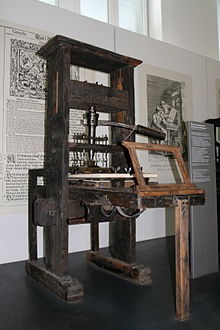










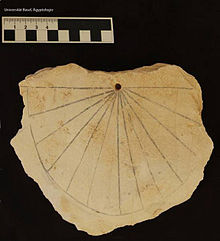




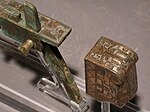

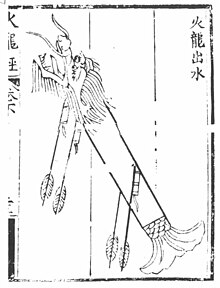

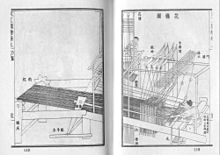



No comments:
Post a Comment